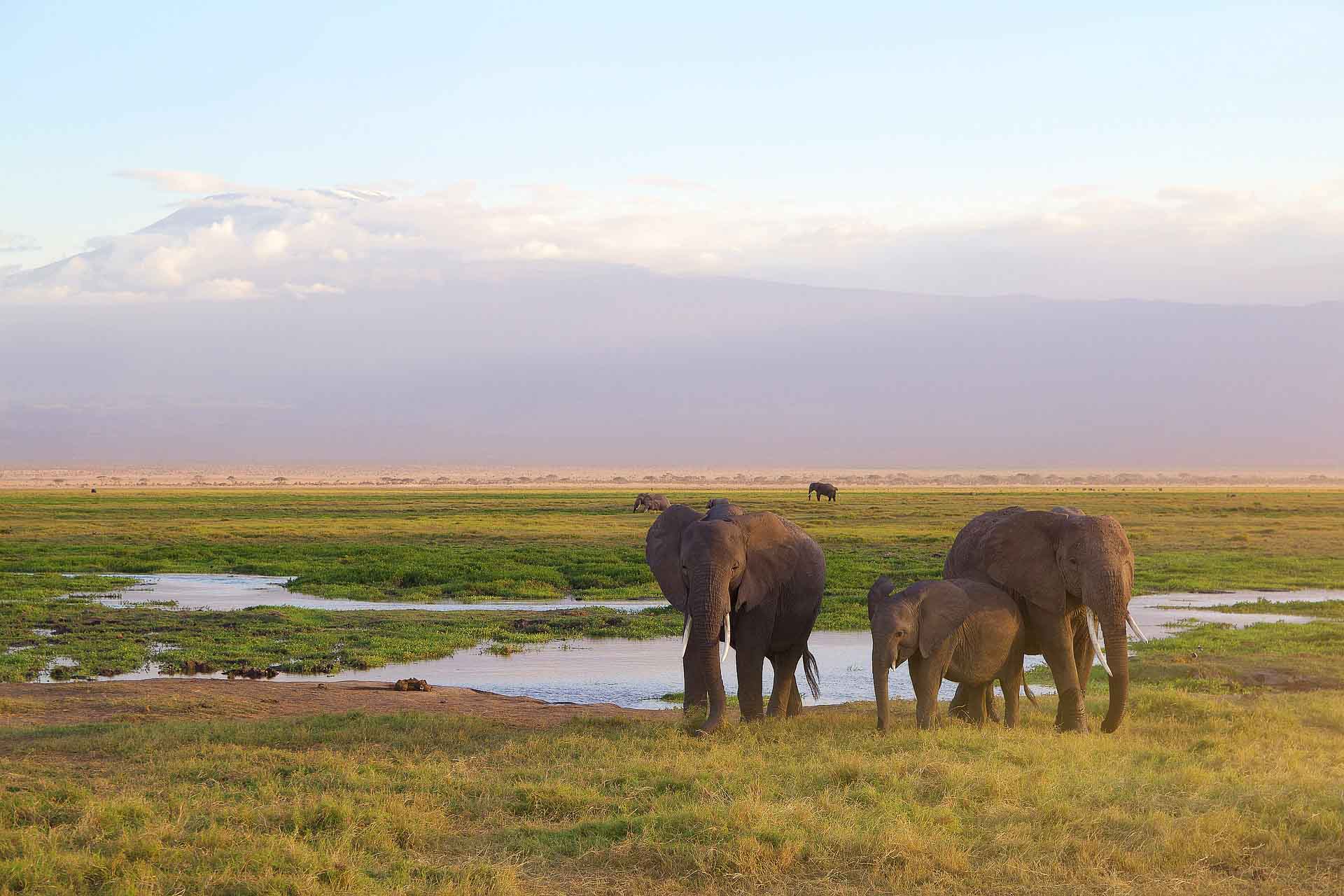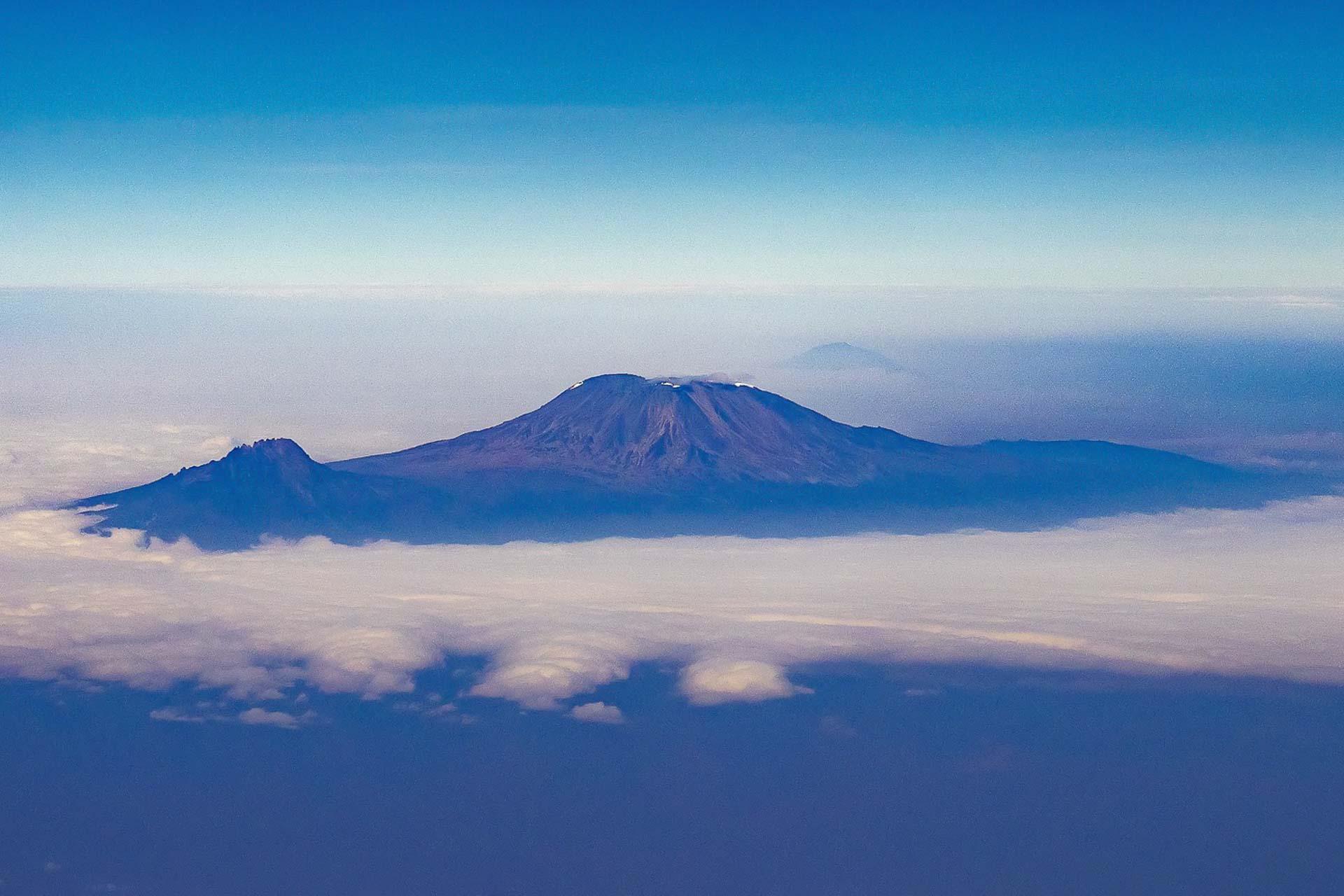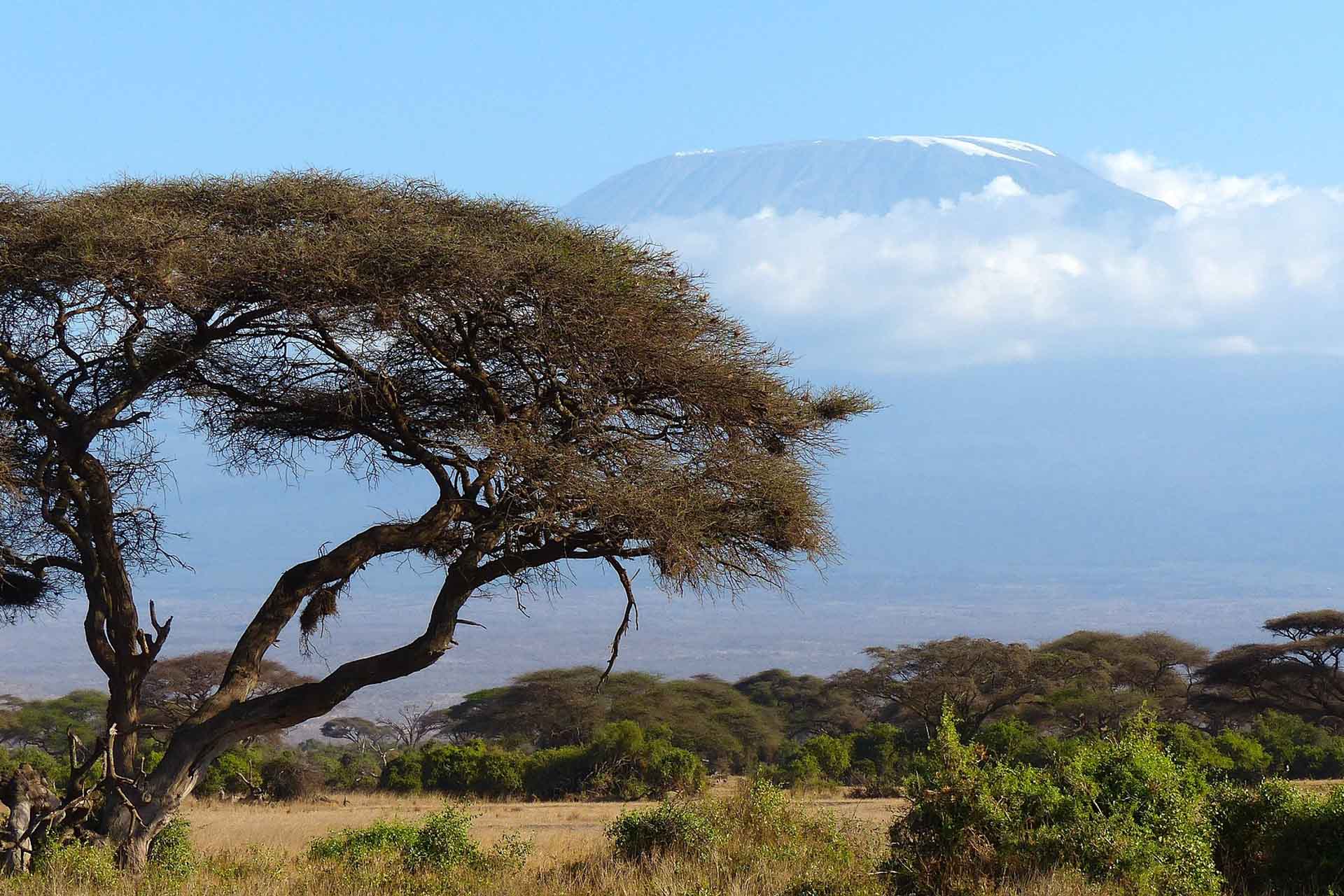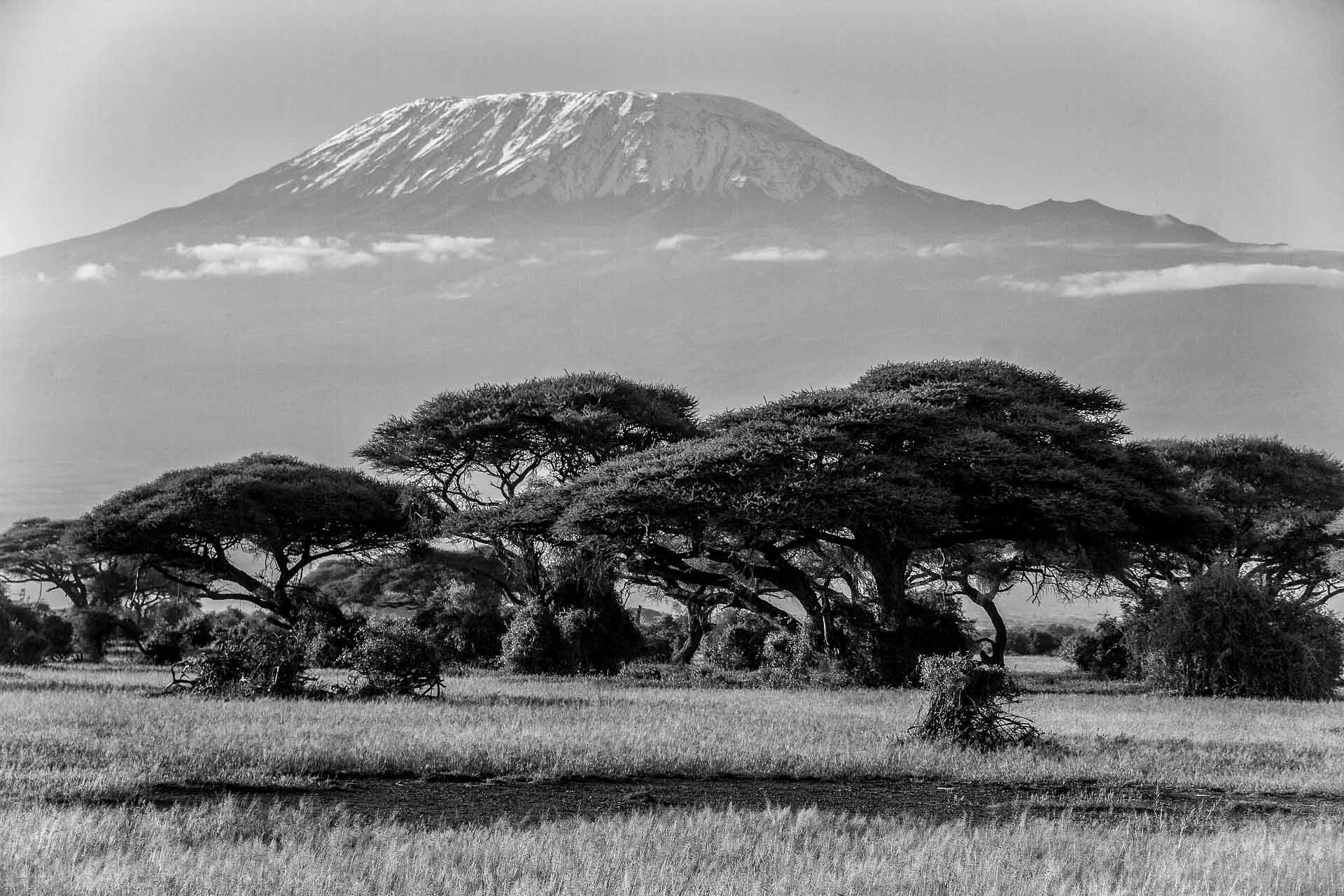We lived 7 months in Kenya and managed to get to know the region fairly well. Absolutely, you should not miss on the safari of Masaai Mara / Serengeti. However, climbing Kilimanjaro and reach the roof of Africa must be in your itinerary too!
Nestled in northern Tanzania near the Kenyan border, Mount Kilimanjaro stands as Africa’s tallest peak at 5,895 meters (19,341 feet). A UNESCO World Heritage Site, it beckons climbers aiming to conquer the Seven Summits—each continent’s highest peak. Kilimanjaro is favoured for its scenic beauty and because it requires no technical climbing skills. However, the challenge of altitude sickness underscores the need for good fitness and a trusted guide crew.
As the highest free-standing mountain in the world, Kilimanjaro was formed from three volcanic cones—Kibo, Shira, and Mawenzi. The last two are extinct, but Kibo, the highest one, is dormant and is it might erupt again someday.
Kilimanjaro’s icy cap is kind of like a history book of the Earth, but it’s been losing pages fast. From 1912 to 2011, 85% of its glaciers have disappeared. We went from 11.4 square kilometres of ice to just 1.76 square kilometres. And if things keep going this way, by 2060, we could be saying goodbye to the ice cap for good, mostly because of deforestation rather than climate change.

How to Get to Kilimanjaro
Your trip to Mount Kilimanjaro begins with a flight to Kilimanjaro International Airport (JRO), nestled between the towns of Moshi and Arusha in Tanzania. These towns are not only gateways to the mountain but also to the broader experiences Tanzania offers, such as the famous African safari and other natural attractions.
The Most Popular Routes to the Summit of Kilimanjaro
Picking the right path up Kilimanjaro is like choosing the flavour of your adventure. It’s about matching the route to your stamina, your dream views, and how you want to feel when you tell the tale. Here we tell you about the three most popular ones:
Marangu Route
The Marangu Route, or the “Coca-Cola Route,” is the classic way to climb Mount Kilimanjaro. If you choose this path, you’re walking in the footsteps of Hans Meyer, the first person to ever make it to the top, back in 1889. This trail takes you right through Kilimanjaro National Park, and you’ll experience all sorts of climates along the way, from jungles to desert-like alpine zones.
This path is often seen as the easiest, thanks to its gradual slopes and direct approach. Typically, climbers take 5–6 days to reach the summit, and many people think getting the shorter and fastest path is the easiest way up. But rushing up the mountain is a big reason why a lot of people don’t make it to the top. Zipping up faster gives your body less time to adjust to the high altitude, making it tougher to keep going. Slow and steady not only wins the race; it also gets you to the peak!

One thing to keep in mind about the Marangu Route is that it uses the same path for both the ascent and descent, which means you’ll be seeing the same scenery both ways. Plus, because it’s such a popular trail, it can get pretty crowded. This adds a unique social vibe to the climb but also means you’ll be sharing the path with plenty of other adventurers.
On the bright side, it is the only route where you get to crash in dorm-style huts instead of tent camping. These huts offer a bit more comfort and shelter, which can be a game-changer, especially during those chilly mountain nights or rainy seasons. So, if the idea of a bit more comfort while you’re on your big adventure appeals to you, Marangu might just be your way to go.
Machame Route
Also known as the “Whiskey Route”, it is a top pick for tackling Kilimanjaro. It’s a hit with climbers, weaving through a stunning tropical forest right from the start. This trail can be done in a 6-day sprint and a more laid-back 7-day trek. Opting for the 7-day journey gives you extra time to acclimatize, boosting your chances of making it to the top.
As you climb, you’ll pass through Kilimanjaro’s five climatic zones, tackle the famous Barranco Wall, and get up close with the otherworldly Dendrosenecio kilimanjari plants. These unique flora look like something from another planet and can’t be found anywhere else in the world.
Lemosho Route

The Lemosho route is on the rise, quickly becoming a favourite for its breathtaking views, solid acclimatization schedule, and some of the best odds of reaching Kilimanjaro. Kicking off on the mountain’s western side, Lemosho lets you take your adventure in 6, 7, or 8-day treks.
In this route, you get to hike up to Cathedral Peak, a towering point of the Shira Volcano, where you get some of the most stunning views. The 7-day journey starts at 3414 meters, giving you more high-altitude hang time right from the get-go and easing you into the climb with shorter walks in the first couple of days. This approach is an ace for acclimatizing, paving the way for a successful summit shot.
And for a bit of inspiration, Angela Vorobieva, at the grand age of 86, conquered Kilimanjaro via the Lemosho route with Altezza Travel, snagging a Guinness World Record as the oldest person to ace this climb at that time. Later, she lost this record, but kept being the oldest person to reach the summit without oxygen aid.
How Much Does It Cost to Climb Kilimanjaro with a Guided Tour?
The journey typically costs between $2000 and $2300 per person, covering a range of essentials that ensure you can focus on the climb without sweating the small stuff. They also include camping and conservation fees, a rescue fee, payments to your crew, and even a forest fee on certain routes. These costs make up about half of the total price, contributing to why Kilimanjaro hiking tours are pricier than many other popular trekking spots.

Besides covering the logistics and support, a significant portion goes back into the local communities, funding improvements and supporting positive change. By choosing to climb with reputable companies, you’re playing a part in uplifting the areas around Kilimanjaro. These taxes and fees contribute to community betterment, ensuring that your journey to the roof of Africa has a lasting impact beyond the personal achievement of reaching the summit.
Choosing the right guide for your Kilimanjaro adventure is crucial, given the complexity and challenges of the climb. Among the many options available, Altezza Travel is one worth considering. Since 2014, they have been operating in Tanzania, emphasizing the importance of trustworthiness, ethical practices, and environmental stewardship. They strive to contribute positively to the local communities and work towards preserving the natural beauty of Kilimanjaro.
In addition to guiding climbers to the summit, Altezza Travel also offers wildlife safaris, beach vacations to places like Zanzibar, and other Tanzanian adventures. Their tours, departing every 2 to 3 days, include options for various routes, catering to different preferences and experience levels. For those who value responsible and respectful travel, Altezza Travel could be a consideration for your journey to the roof of Africa.
